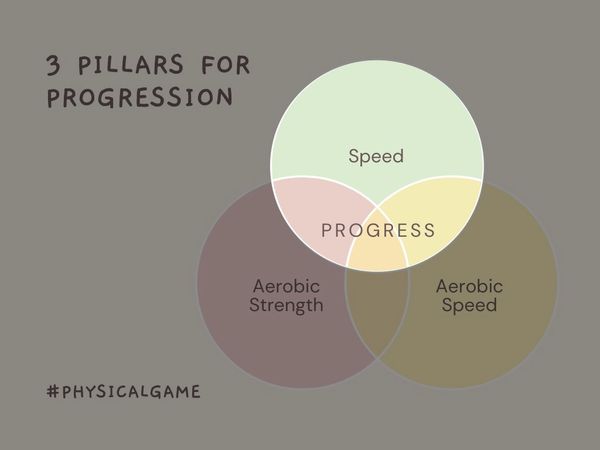Speed consists of many factors and there are multiple ways of developing speed, which when combined and not overdone can leave you bulletproof on the race course.
Functionality
Ask yourself first and foremost, is your speed functional or not? Does it relate to purpose or is it purely imaginary – i.e., how does the speed you are generating relate to the type of sport or type of racing you are preparing for?
When you think about developing speed, generally you are thinking of working to develop sustainable, functional speed. You cannot drag your body kicking and screaming into form by training at speeds which you cannot possibly sustain due to a lack of strength or endurance. Functionality is partly about being realistic.
Overspeed
There is more than one way to skin a cat and, when you think of overspeed, it doesn’t mean you need to destroy your body and your lungs to create it. Here are few examples of how you can incorporate overspeed into your training:
- Swimming in a wetsuit and paddles creates a great overspeed effect.
- Running repetitions on a slightly downhill gradient can generate great overspeed, as well as an increased cadence, without sending your lactate into the red.
- Motor-pacing is a brilliant weapon for building overspeed, which we more often than not used to employ in the squad during faster bike sessions.
Essentially, be creative in the ways in which you would like to incorporate overspeed and enjoy moving fast for minimal effort!
Speed gears
A great swim coach once told me that I should have 5 different speeds at differing intensities during my training.
It was one of the best pieces of advice I ever received as an athlete and it applies across the board, i.e., in a running, cycling or multisport context too.
It is hands down one of the best ways to get to know your own capacity physically as an athlete that I know of.
Relaxing into speed
If you can learn to relax into speed, then it stands to reason that your capacity to sustain it will vastly improve too. We have this idea that speed equates to tension and effort, however this is not true - effort counts, yet effort is negated by tension.
Practise relaxing into your speed reps, let the flow come, let the muscles in your face relax and that same energy which was previously being wasted will then be channelled back into your performance levels.

Into the red
If you are in the red zone, you are in the dead zone! People have this rather romantic idea that anaerobic threshold or FTP means we need to push right to the top of it!
However, this is not true, nor is it wise either. If you can touch the threshold zone without ruining yourself in the process, you are developing and evolving. Your speed will also evolve and develop sustainability - there’s that ‘s’ word again. Always zoom out and think about the long-term.
Cadence
Cadence is as critical as to speed as speed itself is: your ability to force your aerobic system to work is another part of the conditioning puzzle. Speed is a measure of your aerobic power, strength, conditioning and the body’s ability to fire automatically. Cadence is an aspect of speed which you definitely need to be able to draw on.
Form
It is not about what, it is about how; and how you do something is effectively the definition of form. Speed, therefore, is a by-product of form, which is a by-product of efficiency.
You simply cannot swim, ride or run fast without good form. For instance, swimming fast requires a lack of tension, bike speed requires power and smooth form, and running requires the correct and optimal lean angles to allow you to make the most of gravity and the positive effect it can have on momentum.
Recovery speed
One of the key indicators of form is the speed of your recovery. From what I have personally witnessed, those who can recover at higher speeds are more likely to race well. This is something you build over time. First of all, make sure that your effort speed is sustainable during your speed sessions and then your recovery can be manipulated to give it better speed.
So rather than fast/slow, you can have fast/medium as your intensity change. This lends itself to a higher aerobic function and better lactate buffering capacity.

Leave the junk alone
Those sessions that don’t really serve any purpose, predominantly those which are not fast enough to stimulate threshold or are too fast to stimulate aerobic capacity, can sometimes be far from the best bang for your buck from a training perspective.
Many age group athletes are guilty of incorporating too many of these sessions into their training, and whilst it is not a problem if you are happy ticking along at the same pace all the time, bear in mind that this type of training is cutting off your nose to spite your face from a speed point of view.
Your heart is a muscle. So, if you are full of neuromuscular fatigue from grey area training, your heart is going to fail to fire when you need it most, leading you into the undesired areas of plateaued heart rates and speeds.
Speed work is like herbs
Use speed work just like you would use herbs, spices or seasoning when cooking. If you throw too much spice on a meal it will become overwhelmed. The same is true of speed. Use it sparingly and it will certainly add to the taste of the outcome and to the function of your process.
